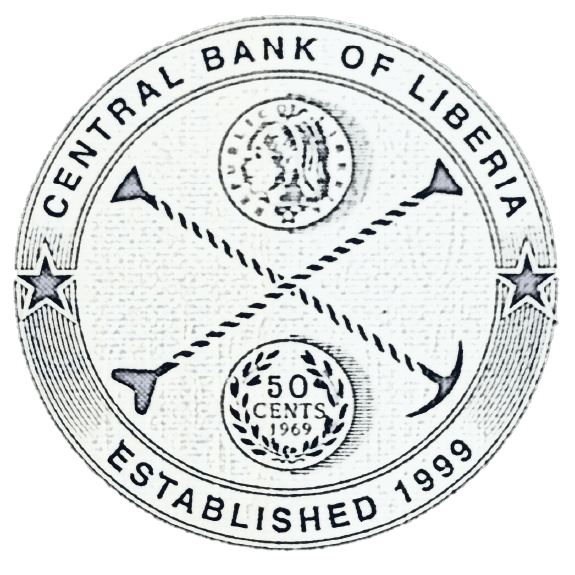
Background and Issues
The issue of the dual currency regime became a topical issue during the nationwide consultative meetings on the Vision 2030, Liberia Rising with several speakers favoring changes in the present dual currency law to one having the Liberian currency as the sole legal tender in the country. The issue is again receiving public attention, this time, as a result of the House of Representative’s recent vote to amend Part V Section 19, Subsection 1 and 2 of the Central Bank of Liberia (CBL) Act of 1999 which authorizes the establishment of the CBL. The action of the House of Representatives equates to forced de-dollarization. It is important to note that prior to the House of Representative’s recent decision, the CBL has engaged the National Legislature, the Fiscal Authority, the Economic Management Team, and other relevant stakeholders of the Liberian economy regarding the need to de-dollarize and encourage the wider use of the Liberian dollar.
However, an issue of this nature has the propensity to create unnecessary public anxiety mainly because of its implication on the welfare of the people and the impact it may have on investors. Monetary issues, especially those relating to the effectiveness of national currency management, is at the heart of any framework that seeks to improve the wellbeing of citizens of any country. On account of its sensitivity, it would be prudent that continuous consultation regarding de-dollarization with selected experts (both at national and international levels) should be held to examine the level of progress that has been made since the development of the draft de-dollarization roadmap in 2012.
This kind of high level consultations are important because the issue of the dual currency regime in Liberia is not just a question of de-dollarization, but means something more that requires a conscientious national effort supported by the Legislature and the Executive Branches of Government. It requires expert opinion of major stakeholders with explicit complementary roles of both the monetary and the fiscal authorities. This is why, the CBL has over the last seven years consistently and unambiguously proffered the promotion of a wider use of the Liberian dollar and endeavored to encourage the Government of Liberia to begin collecting some taxes in Liberian dollar that were originally paid in US dollar as initial steps in the direction of gradual de-dollarization.
The Bank recommendation remains the adoption of a gradual and sequential path towards full de-dollarization. A strategic approach underpinned by market fundamentals should be adopted, notwithstanding the growing pressure on the Liberian authorities from some segments of the population and WAMZ member countries to act hastily.
To this end, the attainment of a smooth transition to de-dollarization must go alongside a well-organized and realistic development program of Government that focuses on poverty reduction supported by increased productivity in the real sector to enhance wide range economic diversification that will boost the strength of the Liberian dollar.
A medium-term timeline should be considered, leveraging on the stable macroeconomic conditions that have been part of the economic landscape in large part for the last eleven years. Within this timeframe, the fiscal and monetary authorities must work in tandem to ensure that supportive policies are implemented that would lead to a soft landing when the change is announced. This will avoid the risk of a single currency regime that is more prone to depreciation which, instead of providing remedy, will fuel inflation with adverse social and economic consequences. Forced de-dollarization comes with huge macroeconomic costs and introduces additional risks in the financial sector.
Empirical Lessons
Empirical evidence[1] from a cross-country analyses shows that few highly dollarized economies that attempted de-dollarization by pursuing a gradual, market-driven approach had some successes. Countries such as Israel, Poland, Chile, and Egypt pursued policies of gradualism aimed at lowering inflation and deepening the financial market by creating markets for bonds in local currency, creating differential remuneration rates on reserve requirements on foreign currency deposits; ensuring active bank supervision to make sure that banks cover their foreign currency positions, extending foreign currency loans directly to sectors that earned foreign exchange so as to hedge against foreign exchange rate risk, among others.
On the other hand, countries (such as Mexico and Pakistan) that implemented a more rapid or forced de-dollarization and achieved a sustained de-dollarization also experienced significant macroeconomic imbalances characterized by huge capital flight, low remittance inflows, and less financial intermediation. Similarly, Bolivia and Peru chose the path of forced de-dollarization by forcing conversion of foreign currency deposits (FCDs) to local currency in the face of high inflation. A monetary framework initially thought to be a lasting panacea, actually proved to be a failure, given that there was an abrupt depreciation of the local currency that led to capital flight and financial disintermediation.
It is important to note that despite the level of developed real sectors of these countries with high levels of economic diversification, their policies of rapid and forced de-dollarization ended in distinct failure. On account of the experience drawn from the above mentioned failures by countries that pursued forced de-dollarization, experts have generally acknowledged that a country seeking de-dollarization should adopt a policy of gradualism and sequential approach in order to minimize the costs associated with moving away from a dual currency regime to a single currency economy. Some of the pre-conditions for success highlighted in various empirical studies include macroeconomic stability (i.e. low inflation and stable exchange rate); development of financial markets in local currency, regulatory reforms such as differential in reserve requirement, Government operations in local currency, increased usability of local currency, use of foreign aid in local currency, prohibition of pricing and cash payments in foreign currency among others.
CBL’s Perspective
In furtherance of the foregoing premise, the CBL views the process of forced de-dollarization without due consideration of the fundamental pre-conditions as being in the wrong direction. The sponsors of this bill obviously had good intentions; however, the approach is wrong and will not produce the desired results. The nature and the structure of the current monetary arrangement for Liberia, the dual currency regime, is complexed; therefore, a decision that intends to alter such a regime should not be driven by mere public perceptions, or should not be propelled by political persuasion, rather it should be anchored on empirical findings and the structural dynamics of the economy. For example, the Liberian economy is highly import driven with very low level of manufacturing.
It is important to note that having the Liberian dollar as the sole legal tender does not obviate the necessity of taking key economic actions in order to support the Liberian dollar. Many of our neighbors in the sub-region have adopted single currency regimes, yet their currencies are under immense exchange rate pressure with high inflation as compared to Liberia. The productivity of the real sector, value chain production made possible by the availability of adequate infrastructure and reliable energy supplies, institutional reforms, collective adherence to the rule of law, adequate human resource capacity are the main requirements for a country to achieve a middle-income country status, but not merely a country’s currency regime as has been construed and forcefully expressed in some quarters
In an effort to de-dollarize, the CBL in 2012 drafted a De-dollarization Roadmap, pending Board approval, to guide its steps in meeting the fundamental pre-conditions necessary for successful de-dollarization. The four-year de-dollarization roadmap follows a gradual, market-driven approach with well-defined roles and responsibilities of both the monetary and the fiscal authorities. Since the development of the roadmap, the CBL has taken a number of steps in its quest to transition the economy to a single currency regime for effective implementation of monetary policy. The Bank began the issuance of market instruments including treasury bills, treasury bonds, and CBL bills to absorb excess liquidity while raising returns on Liberian dollars assets. The Bank has also established a Liquidity Working Group to proffer recommendations to policy makers, aimed at managing liquidity and has also established a Financial Markets Department as the vehicle for deepening the financial sector. The Bank has developed and will continue to refine the comprehensive road map to guide actions over a period of at least four years that will lead to de-dollarization.
Conclusion and Recommendations
In conclusion, forced de-dollarization without due consideration of the fundamental pre-conditions is a step in the wrong direction. This could lead to macroeconomic imbalances characterized by huge capital flight, low remittance inflows, and less financial intermediation. The nature and the structure of the current monetary arrangement for Liberia, the dual currency regime, is complex; therefore, a decision that intends to alter such regime should not be driven by mere public perceptions, or should not be propelled by political persuasion, rather it should be anchored on empirical findings and the structural dynamics of the country. Hence, the CBL believes that it is only prudent to move to a single currency through sequential collaboration with the fiscal authorities and consultation with the Economic Management Team. Against this backdrop, the CBL recommends the following:
* That the draft roadmap developed be reviewed and subsequently adopted by all stakeholders to guide the process of De-dollarization.
* That in order to achieve De-dollarization, a gradual market approach be pursued, as set out in the roadmap: 1) Transactional De-dollarization followed by 2) Financial De-dollarization.
